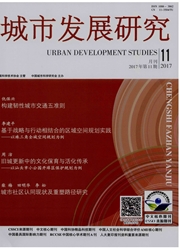

 中文摘要:
中文摘要:
中国城市的历史街区正面临着失去地域性文化特征的危险,而城市保护规划却缺乏有效的理论基础和依据、、康泽恩城市形态理论在欧洲城市研究中已经得到了成熟的应用,并作为理论基础指导城市的遗产保护规划,被认为是解决中国城市形态问题的有效方法。选取广州的传统居住区域——荔湾第十甫路历史街区作为案例研究对象,运用城市形态区域化理论进行研究,并最终得到城市形态区域的划分结果。在形态分析过程中,阐述如何破解研究困境,最终建立形态研究和保护规划之间联系的过程:
 英文摘要:
英文摘要:
Nowadays, the historical areas in Chinese cities are faced with the risk of losing their traditional characters, and the urban conservation in China is still ineffectual because of lacking theoretical basis. M.R.G.Conzen's urban morphological regionalization method has so far largely been applied in the morphological research of the European historical areas, and provided a basis for conservation planning. It is a effective method to solve the morphological problems in China. This paper examines Conzen's method of morphologicaI regionalization in No.10 Fu area which is a traditional residential area in Guangzhou, uses the three components of urban morphological region, and demonstrates how to solve the problems of poor historical sources in the case study. At the end, the application of the method to conservation planning is discussed..
 同期刊论文项目
同期刊论文项目
 同项目期刊论文
同项目期刊论文
 期刊信息
期刊信息
